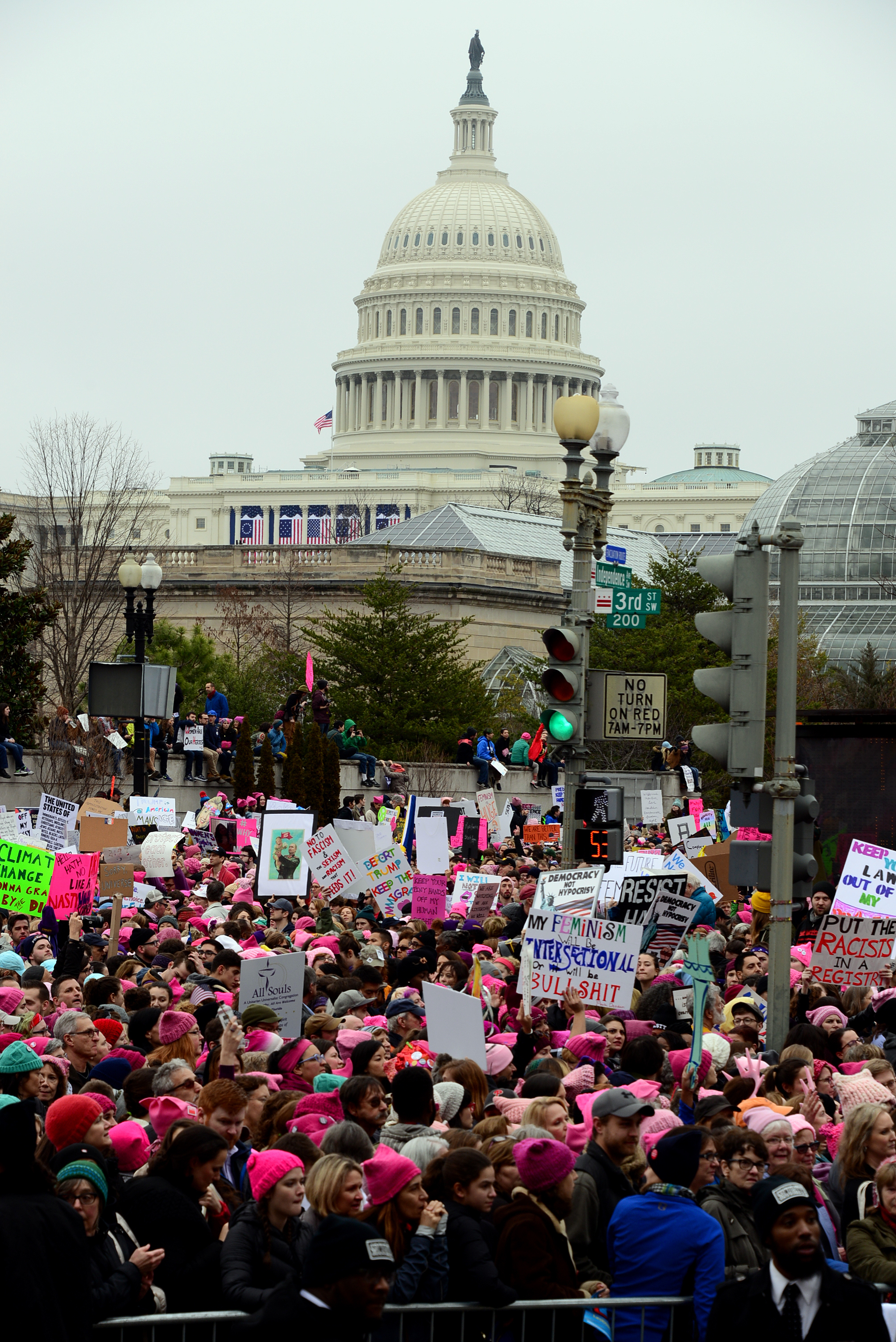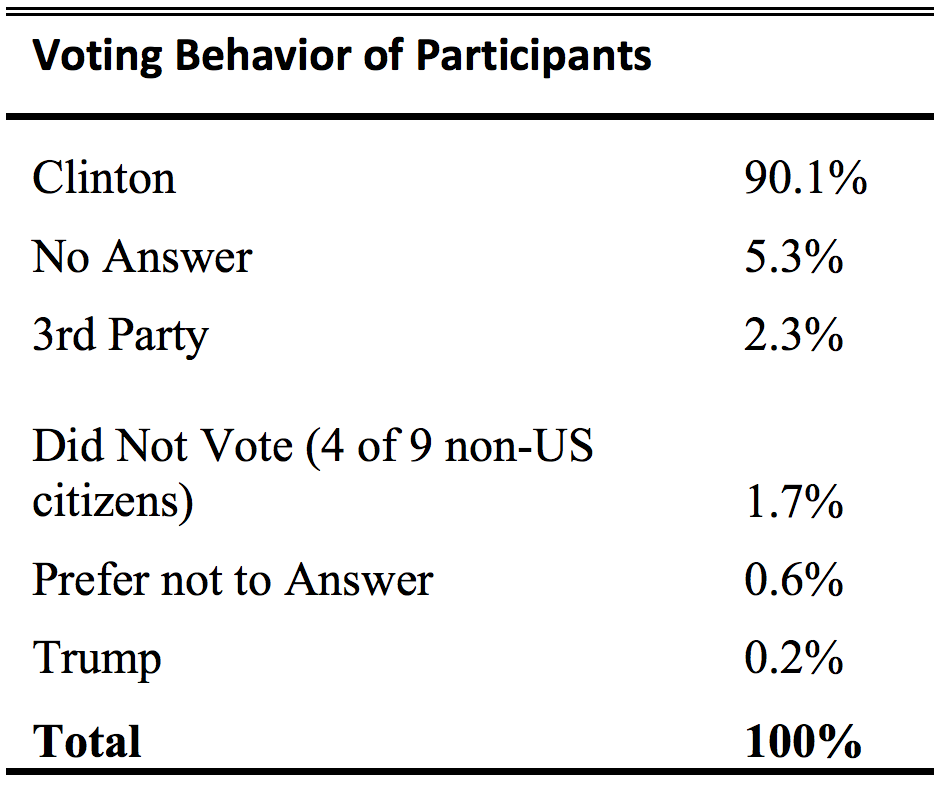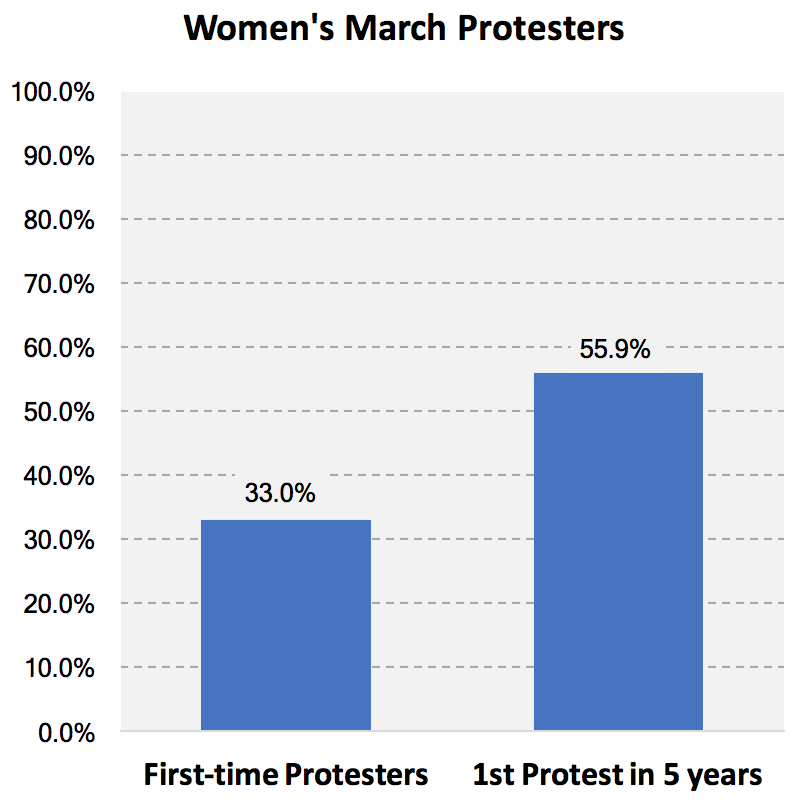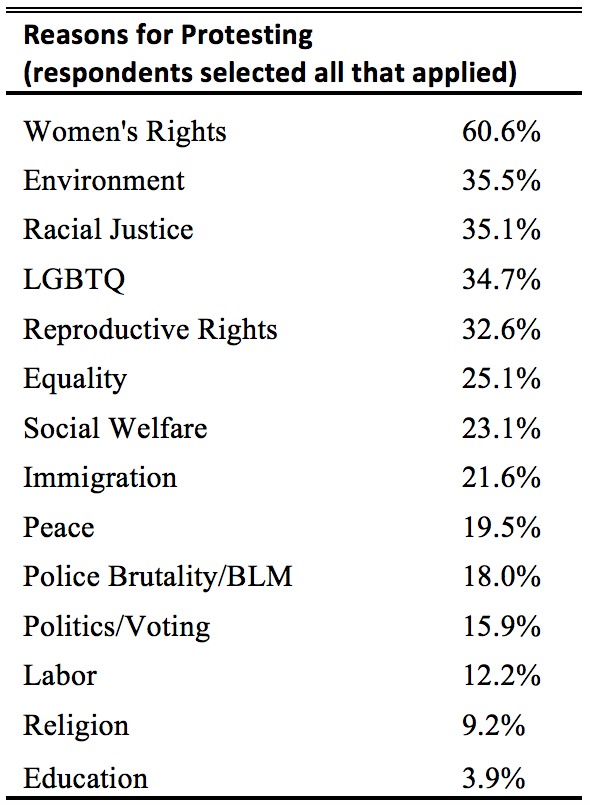
Waves of pink knitted hats and protest signs packed the streets of D.C. on January 21, 2017, just one day after President Trump’s inauguration drew average crowds. The Women’s March of 2017 was the largest protest in recent history, bringing together over 500,000 people in DC- the location of the flagship march, and over 2.9 million people nationwide. Protesters came from near and far to protect a diverse set of rights that are threatened by the incoming administration. Perhaps the Women’s March can be understood as a partial response to President Obama’s declaration in his farewell address that the most important office in a democracy is “citizen,” and, thus, citizens must work to improve our society, not just when there is an election or when their own narrow interests are at stake. The march was an example of what this kind of democracy looks like. Originally proposed on social media, the idea for the march took off and a groundswell of support emerged from independent individuals and those associated with organizations. Despite this level of support, many have speculated about who attended the march, whether they voted, the goals of protesters and their level of civic engagement. Some have discounted the protesters as only forwarding the perspectives and issues of white women and eschewing those of other groups such as people of color and/or members of the LGBTQ community.
Combatting this new era of “alternative facts,” a research team led by Dr. Dana R. Fisher, Dr. Dawn M. Dow and Dr. Rashawn Ray from the University of Maryland, College Park provides data-supported facts about participants at the Women’s March. Teams of 2 surveyed participants throughout the march (full details of sampling and methodology available upon request) to understand who was protesting and why. In total, 527 people completed the survey (representing a 92.5% response rate).

Far from using protesting as a substitute for voting, as a recent tweet from Trump suggested, initial findings from this project show that the protesters at the Women’s March voted, and overwhelmingly for Secretary Hillary Clinton. Among respondents, 90.1% reporting voting for Hilary Clinton, 2.3% voted for a third-party candidate and .2% (one person) voted for Donald Trump. Among the 1.7% who explicitly said they did not vote, nearly half were non-U.S. citizens who are not eligible to do so.
Our findings also suggest that the Women’s March has potentially lit the political fires of a new generation of activists and reactivated the political activism of others. Indeed, a third of the participants reported that the Women’s March was their first time participating in a protest ever. For over half of the participants (55.9%), the March was their first protest in 5 years (including those who had never participated before).

Respondents were also asked to identify the issues that motivated them to protest. Our data suggest protesters were unified by a range of distinct and overlapping priorities. Given the name of the march, it is not surprising that 60.6% of respondents cited women’s rights as a motivation for protesting. However, other social issues were also at the forefront of protesters’ minds. Nearly tied for second place, protesters cited the environment (35.5%), racial justice (35.1%), LGBTQ rights (34.7%), and reproductive rights (32.7%) as motivations to attend. Other political issues were also well represented including equality (25.1%), social welfare (23.1%) and immigration (21.6%). Indeed, rather than representing a narrow set of interests, protesters identified multiple and diverse motivations for participating.

Historically protests focus on one social issue such as equal pay, climate change, voting rights or same sex marriage. The Women’s March was different in that its protesters were seemingly engaged in intersectional activism–a version of activism that is sensitive to how race, class, gender and sexuality complicate inequality. Perhaps the Women’s March is distinct in this way because protesters were not just motivated by concrete issues, but they were also motivated by a desire to protect and reassert a vision of America that embraces diversity and inclusion as a strength rather than a threat. This vision of America is increasingly under attack by the Trump Administration. It remains to be seen how the energy from the march will translate into change locally across the country but recent protests suggest that citizens stand ready to protect their rights and the rights of others.
Dr. Dawn M. Dow is an Assistant Professor of Sociology at the University of Maryland, College Park. She received a PhD in sociology from the University of California, Berkeley and also earned a JD from Columbia University, School of Law. Dow’s research examines intersections of race, class and gender within the context of the family, educational settings, the workplace and the law. Her work has been published in journals including Gender & Society, Journal of Marriage and Family and Sociology of Race & Ethnicity. Follow her on Twitter here.
Dr. Dana R. Fisher is a Professor of Sociology and the Director of the Program for Society and the Environment at the University of Maryland. Her research focuses on environmental policy, civic participation and activism more broadly. She has written extensively on activism and social protest in articles as well as in her second book Activism, Inc. (Stanford University Press 2006). Fisher’s work on protest builds on data collected from around 5,000 protesters at thirteen protest events in six countries. For more information, go to www.drfisher.umd.edu. Follow her on Twitter here.
Dr. Rashawn Ray is an Associate Professor of Sociology at the University of Maryland, College Park. Ray obtained a Ph.D. in Sociology from Indiana University in 2010. From 2010-2012 he was a Robert Wood Johnson Foundation Health Policy Research Scholar at the University of California, Berkeley/UCSF. Ray’s research addresses the mechanisms that manufacture and maintain racial and social inequality. His work also speaks to ways that inequality may be attenuated through racial uplift activism and social policy. Follow him on Twitter here.

Comments 17
I marched — February 6, 2017
Remember to add a "Figures may not total 100% because of rounding" note where it applies!
How online resources fuel the Trump resistance | Stock Sector — February 9, 2017
[…] protests since 2000, and says people are now mobilizing at unusual levels. For instance, results of one survey taken at the Women’s March in Washington found that 33% of people had never participated in a […]
How online resources are fueling the Trump resistance | US-China News — February 9, 2017
[…] protests since 2000, and says people are now mobilizing at unusual levels. For instance, results of one survey taken at the Women’s March in Washington found that 33% of people had never participated in a […]
How online resources fuel the Trump resistance - StockSocial — February 9, 2017
[…] protests since 2000, and says people are now mobilizing at unusual levels. For instance, results of one survey taken at the Women’s March in Washington found that 33% of people had never participated in a […]
How online resources are fueling the Trump resistance - News Project — February 9, 2017
[…] protests since 2000, and says people are now mobilizing at unusual levels. For instance, results of one survey taken at the Women’s March in Washington found that 33% of people had never participated in a […]
How online resources are fueling the Trump resistance – 247 News Online — February 10, 2017
[…] protests since 2000, and says people are now mobilizing at unusual levels. For instance, results of one survey taken at the Women’s March in Washington found that 33% of people had never participated in a […]
170-2 Politics – New Ground — February 14, 2017
[…] MORE. […]
Facebook is playing an increasingly important role in activism - News Project — February 17, 2017
[…] interviewed 528 people who attended the march in Washington, and found that, in addition to Facebook driving attendance, […]
Facebook is playing an increasingly important role in activism | Breaking News Wiki — February 18, 2017
[…] interviewed 528 people who attended the march in Washington, and found that, in addition to Facebook driving attendance, […]
Facebook's important role in activism - StockSocial — February 18, 2017
[…] interviewed 528 people who attended the march in Washington, and found that, in addition to Facebook driving attendance, […]
DigiBlogs: Facebook is actively playing an progressively significant position in activism - DigiBlogs News — February 19, 2017
[…] interviewed 528 people who attended the march in Washington, and uncovered that, in addition to Facebook driving […]
Balancing personal activism and professional objectivity | The Clean Conscience Chronicle — April 6, 2017
[…] issues such as abortion, climate change, LGBTQ rights have spurred many individuals to become activists. Journalists also agonize over these issues, but cannot speak […]
How online resources are fueling the Trump resistance – Money Health Finance — April 7, 2017
[…] protests since 2000, and says people are now mobilizing at unusual levels. For instance, results of one survey taken at the Women’s March in Washington found that 33% of people had never participated in a […]
Nayan Warrior — August 15, 2023
More ways we have to save money from our daily purchases. Here I explained the best way that is save money by taking a customer satisfaction survey. Jack In The Box invites all their customers to take part in the JackListens Survey at the JackListens Official Website. Through this survey, everyone will get a chance to win free Tacos from Jack In The Box restaurant.
jacklistens.com 14 digit code — December 31, 2024
jacklistens.com guarantees a decent methodology by empowering all clients, no matter what their experience, to give criticism.
Jacklistens.Com — May 27, 2025
To stay in tune with its customers, Jack in the Box launched Jacklistens.Com , a customer satisfaction survey available at www.jacklistens.com.